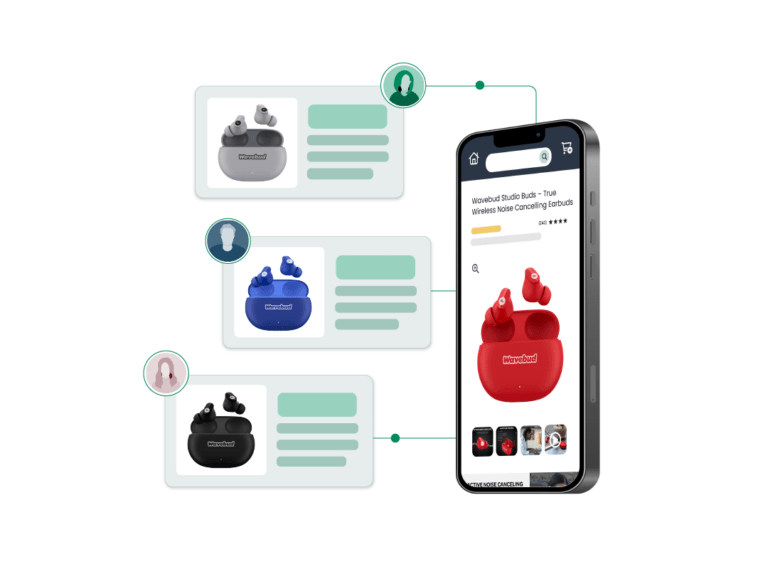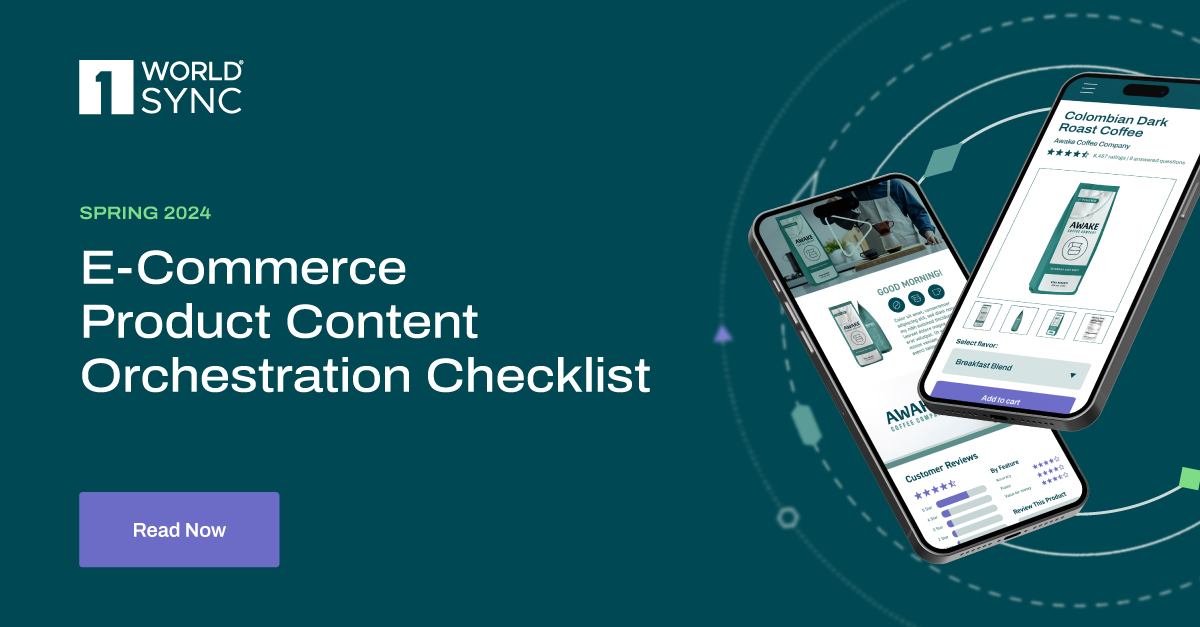How to Create and Manage Content for Multiple Audiences in a Digital World
January 26, 2023

Like at all large companies, you market to a broad range of segments across the digital retail landscape. Your teams are tasked with creating relevant content and appealing to multiple audiences, driving them to purchase.
This mission seems straightforward, but you must employ a careful, intentional strategy to engage each audience without overlooking anyone.
This article from 1WorldSync provides practical steps and methodologies to help you create and manage content for multiple audiences in a digital world.
Identifying Multiple Audiences
Every business targets multiple audiences in its content creation. To create and manage your content effectively, you must accurately identify and understand your audiences.
Shoppers come to your site with varied goals and intentions. Some are ready to buy. Some come to compare products before making a purchase decision. And others are researching to learn about your brand. Understanding the various types of shoppers allows you to segment your audiences to better understand the types of content that will serve and convert them.
The most lucrative –– and some would say important –– audience is the first segment mentioned above: the group that’s closest to purchase. Every content decision revolves around providing value to this segment. Images, written content, navigation, and other site decisions should be made with this group in mind.
And while you’re not prioritizing other audience segments, your content creation and management strategies should still serve these consumers. The key to catering to all audiences is striking a balance in your content strategy.
Understanding and identifying your many audiences empowers you to create and manage content that most efficiently and effectively drives conversions.
Creating Buyer Personas for Your Various Audiences
Content creation and management require intentional strategy if you want to see results. As explored above, your audiences are dynamic. And targeting dynamic segments within a more extensive audience group requires you to understand the intricacies of your consumers’ wants, needs, preferences, and habits.
Building buyer personas for your various audiences allows you to create more relevant content and market your products more effectively. Personas help your content teams identify the unique pain points of each audience segment so you can provide tailored solutions that drive them toward a purchase.
When your content perfectly matches your audience’s needs, you’ll see higher conversions, more significant return traffic, and lower product return rates. Once you’ve created buyer personas for your various audience segments, you can begin creating content that earns more sales.
The Importance of Personalization in Digital Commerce
Personalization is crucial for businesses working to win the digital shelf. The pandemic spurred on a new era of online shopping behaviors in which consumers were exposed to personalization at every turn. What was once a welcomed enhancement to the buyer’s journey is now an expectation.
According to research by McKinsey, 71 percent of consumers expect companies to deliver personalized interactions, and 76 percent become frustrated when they don’t. Digital retail spaces are low-loyalty environments, and shoppers take no issue with changing brands or products If they’re unhappy with their brand experience. Since the pandemic, three-fourths of consumers have switched stores, products, or buying methods.
However, when a brand or business prioritizes personalization, the rewards are clear. Companies that excel at personalization generate 40 percent more revenue than businesses that do not prioritize tailored interactions and experiences.
McKinsey’s research compiles the top personalization preferences for consumers, which we’ve listed below:
- Make in-store and online navigation easy
- Suggest relevant product and service recommendations
- Tailor messaging to consumer needs
- Offer targeted promotions
- Celebrate milestones
- Send timely communications tied to critical moments
- Conduct post-purchase follow-ups
- Personally address communications
- Send triggers based on behavior
- Engage when a consumer makes the initial purchase
Regardless of the channel, consumers view personalization as the standard for online communication. Personalization allows you to engage –– and convert –– multiple audiences in a digital world.
Understanding Consumer Habits in a Digital World
1WorldSync research shows that 74 percent of consumers feel affected by increasing inflation rates. The financial strain causes shoppers to spend more time with product content to ensure they get the best product from the best brand at the best price. Sixty-seven percent of shoppers say they’re increasing their focus on content to ensure they get the most value for their spending.
Your product content drives traffic and informs shoppers. Ultimately, it’s the final factor determining if a shopper will purchase your product or look elsewhere. Understanding how and why consumers interact with content empowers you to create content that reaches your target shopper.
Tailored Calls to Action
Every page should have a call to action (CTA) that compels shoppers to purchase. The primary CTA should target your primary audience. What do you want shoppers to do next? Give them clear instructions to make their next move.
Your primary target segment is ready to buy. A clear CTA allows them to “buy now” or “add to cart.” However, your other audiences may not be prepared to make this move. Provide alternative CTAs that keep them engaged and moving down the funnel toward purchase without scaring them off your page.
Including CTA options to learn more, add to a wishlist, or compare to your other products, continues to draw shoppers in and fosters brand interactions even if they aren’t ready to commit. Tailoring CTAs to your various audiences empowers brands to target multiple segments without prioritizing one over the other.
Creating Content that Reaches a Varied Digital Audience
Various consumers (and audience segments) consume content differently. When you begin the content creation process, start with your segmented audiences in mind. Content must speak to each consumer at each stage in the buyer’s journey.
Regardless of your audience, your content must be easy to read and understand. Unorganized, inaccurate, and inconsistent product content will drive shoppers from your site and PDPs. Implementing a Product Information Management system allows you to aggregate, validate, and communicate your product data across all your systems. Consistent, accurate data cultivates trust and confidence and draws shoppers closer to purchasing.
If you want to compete on the digital shelf, you need a PIM solution. The right PIM system will provide:
- Streamlined data entry
- Real-time data tracking
- A single source of truth
- Scalability
- Standardization
A quality PIM solution allows you to publish content across retailers and channels, ensuring you meet all requirements. Managing your content through a PIM system allows for seamless, universal edits in real-time.
Your customers shop across multiple retailers and platforms. When you bring content to them, they’re more likely to engage with your products and ultimately make a purchase. A PIM allows you to easily manage content for multiple audiences wherever they shop, helping you increase retail sales in a digital market.
Taking Advantage of the Digital Retail World
Businesses have unlimited opportunities to sell and grow in our digital world. We all know content is essential to succeed in this market, but even the best content won’t yield satisfactory results if it’s not created and managed with multiple audiences in mind.
1WorldSync delivers the solutions you need for effective content creation and management for every audience on every platform. From creation to publication and subsequent edits and updates, our tools give you complete control over your content, empowering you to achieve your goals –– whatever they may be.
Reach out to the 1WorldSync team today to learn how our content management tools can help you win market share and earn your spot on the digital shelf. How to Create and Manage Content for Multiple Audiences in a Digital World




